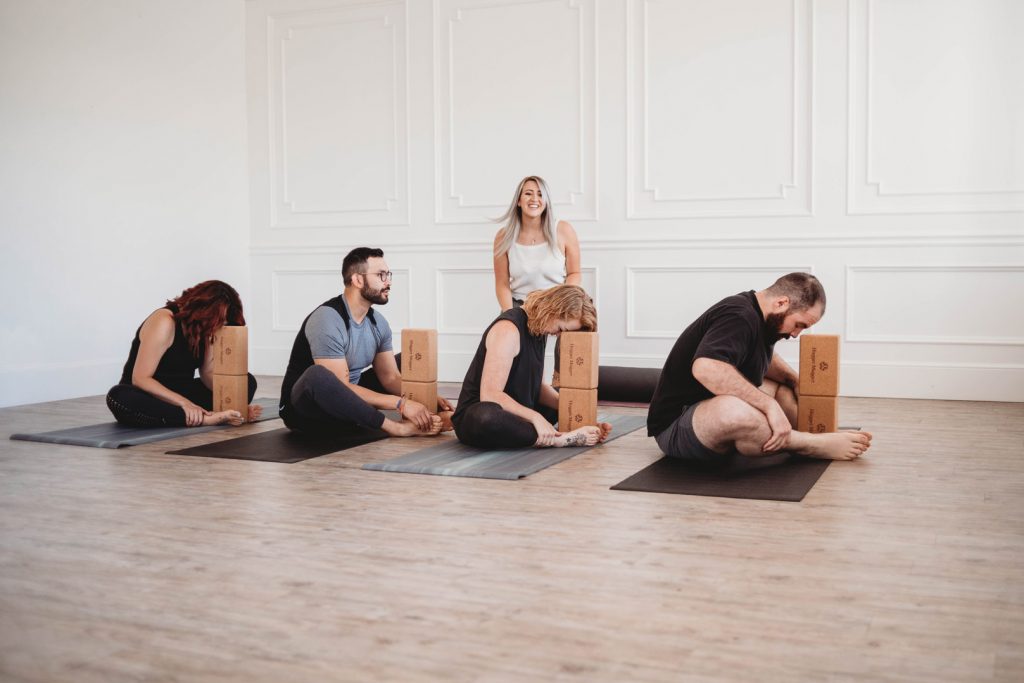Why Don’t My Knees Reach the Floor in Baddhakonasana?
John Szewczyk-9173643533-COPYRIGHTED
Sometimes when I look back at my early yoga teaching, I have to cringe a little (or sometimes, a lot!). Like most yoga teachers, I’ve never taught classes full of cookie cutter practitioners. That should have been a tell early on. But also like many yoga teachers, I assumed that the students whose forward bends and backbends were less than “perfect,” or whose knees were high in the air in Baddhakonasana (Bound Angle Pose) just needed to develop more soft tissue flexibility. I often stated that if these students practiced long enough, they’d eventually be able to perform Instagram-worthy hip-opening poses.
Enter Paul Grilley’s Anatomy for Yoga. While representing Hugger Mugger Yoga Products at a yoga conference in the early 2000s, I took a break from the booth to take a class with Paul Grilley. I’d never heard of him and knew nothing about his work, but Anatomy for Yoga sounded interesting.
Baddhakonasana—Along with Most Other Yoga Poses—Is All in the Bones
Grilley’s 90-minute presentation changed the way I thought about yoga practice. Armed with an assortment of human bones, he showed how the ways our joints are shaped and put together are just as unique as our facial features, hair color and predilections.
Let’s explore hip joints as an example. The amount of hip joint mobility in any individual is determined by the depth, location and orientation of the hip sockets. The shape and angle of the femur bones also influences hip mobility.
People with shallow sockets will naturally have more mobility—along with a greater tendency for cartilage damage, but that’s a subject unto itself. Practitioners whose sockets are more lateral will find greater ease in Baddhakonasana, Sukhasana (Easy Sitting Pose) and Upavista Konasana (Seated Angle Pose). In other words, these people’s hips will externally rotate easily.
Others’ hips tend to internally rotate more easily. If your hip sockets are deep and positioned anteriorly on the pelvis, your femur bones will come in contact with the outsides of your sockets when you practice Baddhakonasana. When bone comes in contact with bone, no amount of flexibility will allow your thigh bones to reach the floor. Our bones truly have the final say.
There are also people whose hip joints easily internally and externally rotate. The range of possibilities for mobility in our yoga students is equal to the number of students in our classes.
It’s All Good
Here’s the good news: it doesn’t matter at all how close your thigh bones come to the floor in Baddhakonasana. It doesn’t matter if Sukhasana will never be your go-to meditation position. Sukhasana is not the only suitable meditation position. Vajrasana (Lightning Bolt Pose) is great for people whose hips are rotate internally more easily.
As teachers, it’s important to remember that each student is unique. There are no cookie cutter yogis. And the students whose thighs reach the floor in Baddhakonasana are no “better” or “more advanced” than the students whose thighs will never reach the floor. The longer we teach, the more we understand that hard and fast rules simply don’t apply to everyone. The ability to meet each student as an individual, and to learn from their unique qualities, is what keeps our teaching vital.
Leave a Reply Cancel reply
Recent Comments
Archives
- December 2025
- November 2025
- October 2025
- September 2025
- August 2025
- July 2025
- June 2025
- May 2025
- April 2025
- March 2025
- February 2025
- January 2025
- December 2024
- November 2024
- October 2024
- September 2024
- August 2024
- July 2024
- June 2024
- May 2024
- April 2024
- March 2024
- February 2024
- January 2024
- December 2023
- November 2023
- October 2023
- September 2023
- August 2023
- July 2023
- May 2023
- March 2023
- August 2022
- July 2022
- June 2022
- May 2022
- April 2022
- March 2022
- February 2022
- January 2022
- December 2021
- November 2021
- October 2021
- September 2021
- August 2021
- July 2021
- June 2021
- May 2021
- April 2021
- March 2021
- February 2020
- January 2020
Theme by The WP Club . Proudly powered by WordPress
